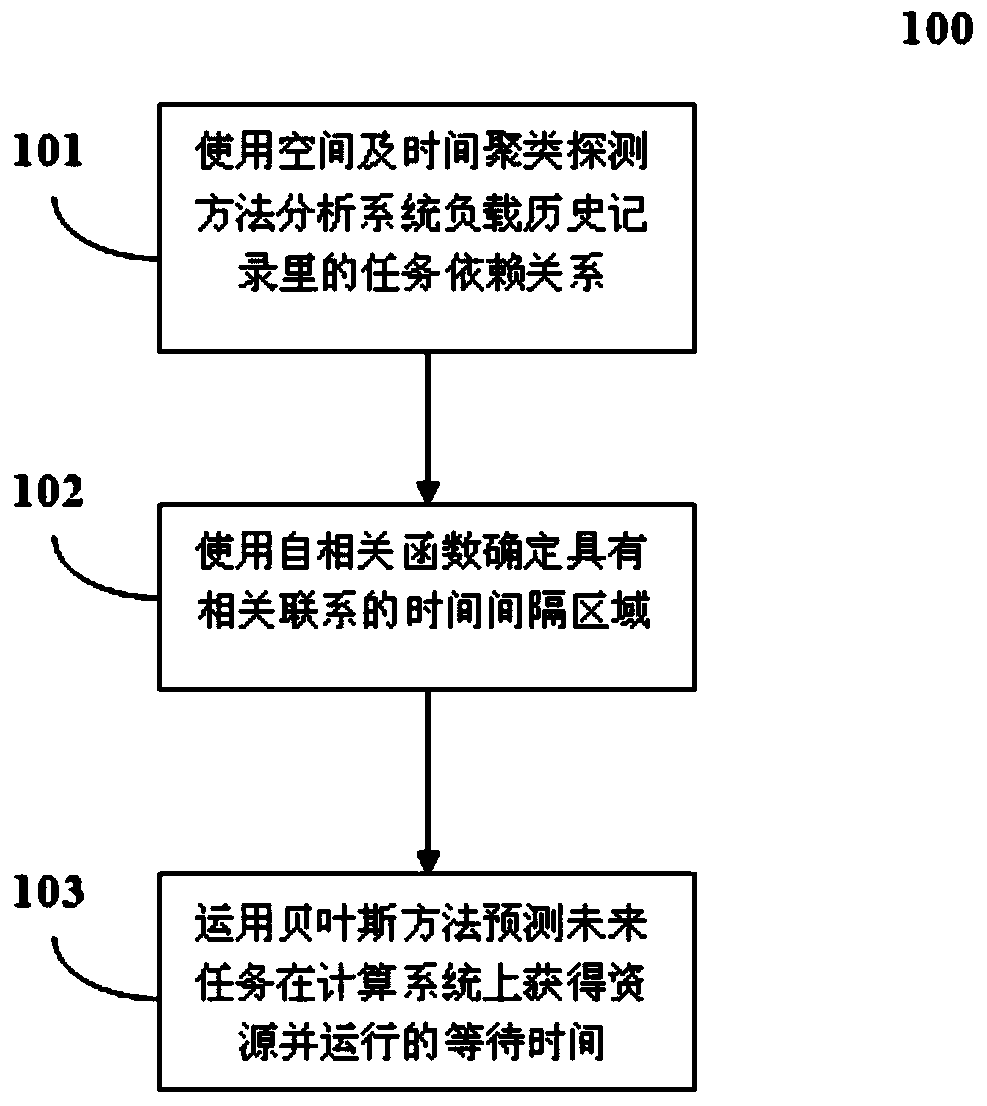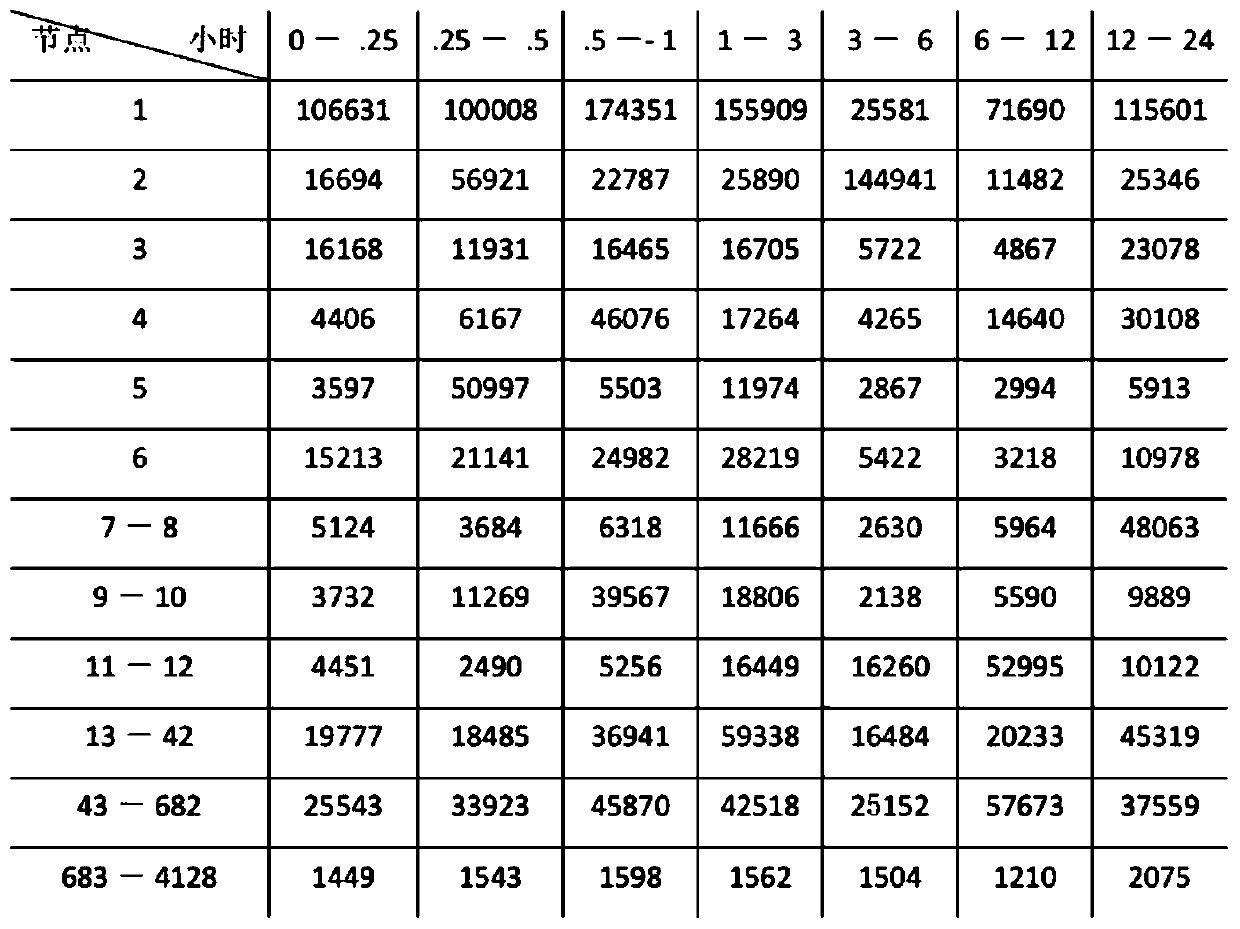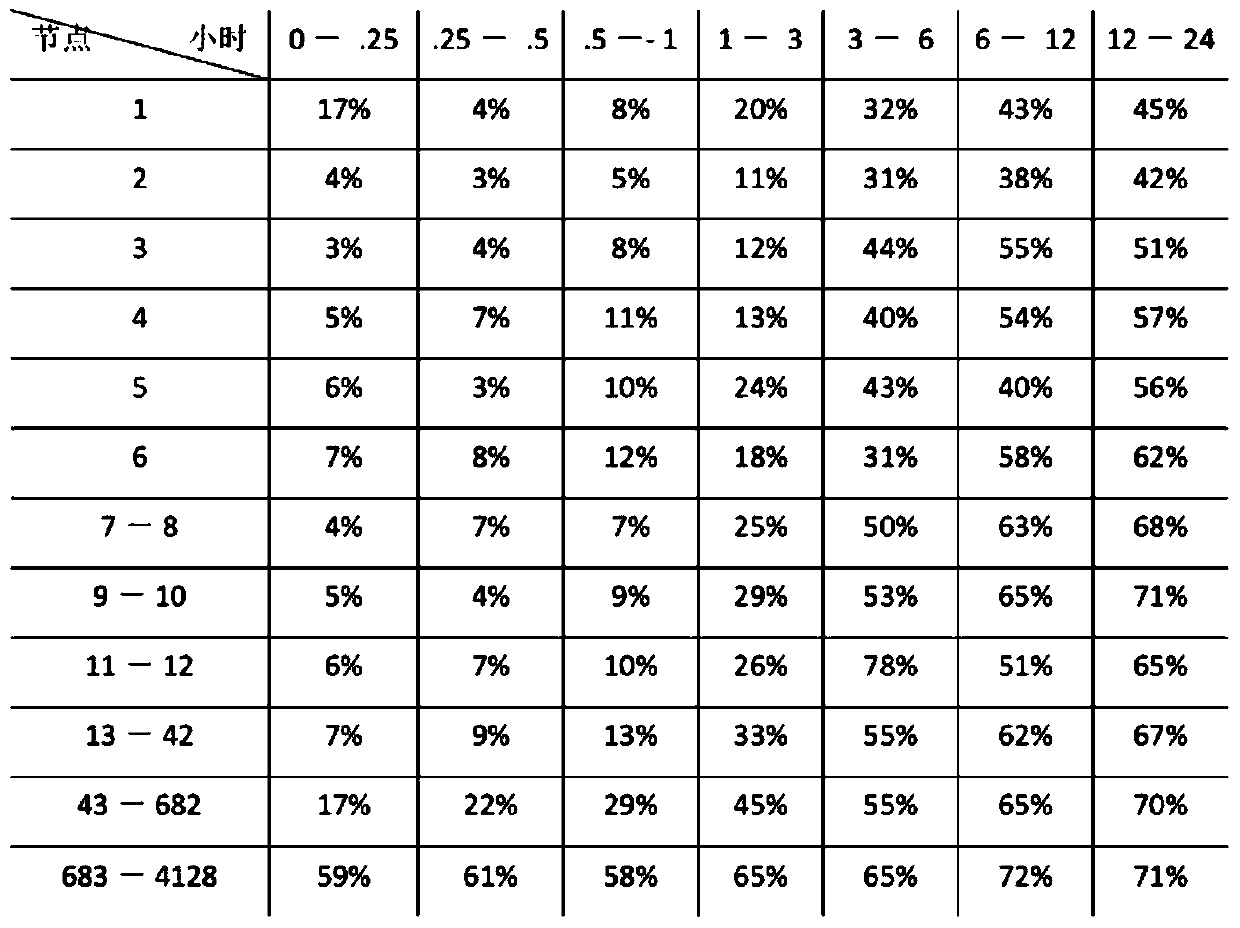Method and system for predicting task resource waiting time
A technology of waiting time and predicting time, which is applied in the direction of resource allocation, multi-programming devices, etc., can solve the problems of inaccurate evaluation and prediction of probability models, difficult mixing of probability distribution model description, and non-obedience to singleness, etc., to achieve optimal job scheduling, Optimizing the allocation of task resource requirements and the effect of reliable forecasting rates
- Summary
- Abstract
- Description
- Claims
- Application Information
AI Technical Summary
Problems solved by technology
Method used
Image
Examples
Embodiment Construction
[0047]In the process of studying the historical load of the supercomputer Kraken, the inventor found that the waiting time of about 52.4% of the jobs (tasks) submitted by users in the job execution queue exceeded the actual running time. For each job, especially parallel jobs, there are two basic parameters that express its demand for computing resources: running time and the number of computing nodes (CPU, memory). From the user's point of view, the present invention hopes to adjust these two parameters under the prerequisite of ensuring the correct result, so that the job can be run quickly and reduce the waiting time in the job execution queue. In the process of statistical analysis, a user submits multiple similar jobs (such as the same execution program, different input data, etc.) within a short period of time, which greatly affects the effective statistical results, because the system can simultaneously execute The number of jobs is generally limited. The present inven...
PUM
 Login to View More
Login to View More Abstract
Description
Claims
Application Information
 Login to View More
Login to View More - Generate Ideas
- Intellectual Property
- Life Sciences
- Materials
- Tech Scout
- Unparalleled Data Quality
- Higher Quality Content
- 60% Fewer Hallucinations
Browse by: Latest US Patents, China's latest patents, Technical Efficacy Thesaurus, Application Domain, Technology Topic, Popular Technical Reports.
© 2025 PatSnap. All rights reserved.Legal|Privacy policy|Modern Slavery Act Transparency Statement|Sitemap|About US| Contact US: help@patsnap.com



